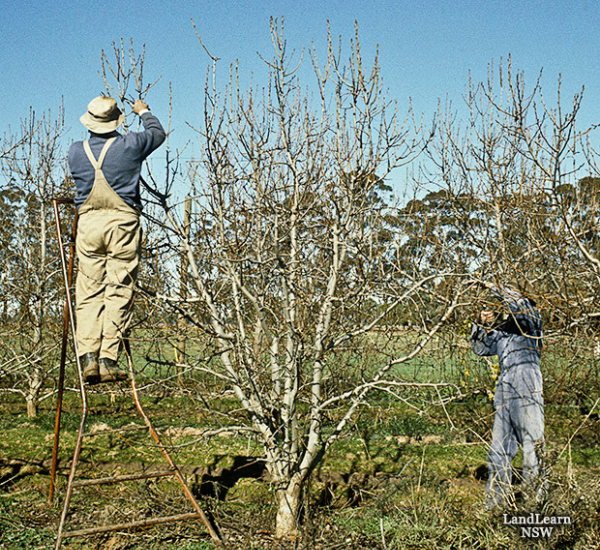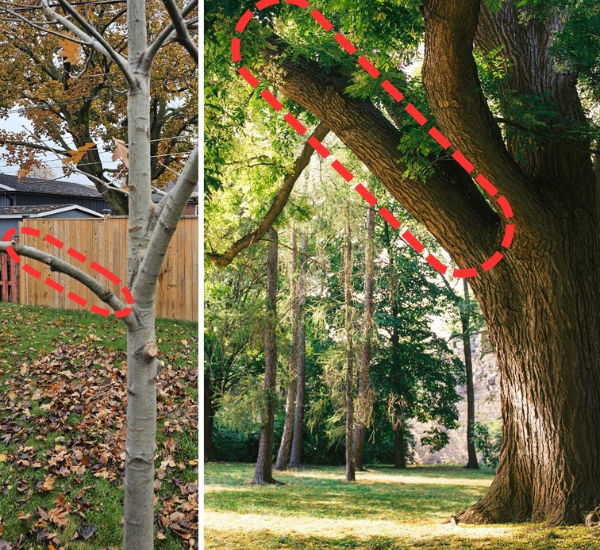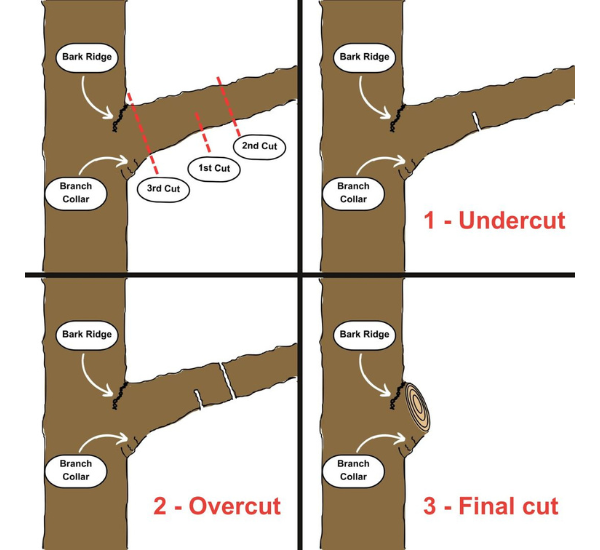Class is now in session and we are answering your burning pruning questions. Let’s go!
What is pruning exactly?
An important first question! Pruning is the selective removal of the parts of a plant to meet specific goals. With trees, it usually involves removing part of or whole branches.
The important takeaway is that pruning entails a thoughtful process done with a specific purpose in mind.

If we don’t prune trees in a forest, why do I need to prune the tree in my backyard?
It’s true, we don’t prune trees in the forest. In fact, trees will naturally shed their branches through a process called Cladoptosis. But unlike trees in the wild, urban trees grow near homes, sidewalks, people and powerlines – where falling branches pose a real risk.
You’ve heard the saying: if a tree falls in the forest and no one is around to hear it, does it make a sound? Now imagine that tree in an urban space – falling onto a house. That’s why pruning is essential for city trees. It pre-emptively removes dead, dying, diseased or poorly attached branches to reduce risk to people and property. It can also be used to encourage proper growth and structure, leading to long-lived, healthy trees.
Are there any other reasons to prune trees?
Yes! Apart from improving health and safety, pruning has other key benefits:
- Providing clearance – Prevents branches from interfering with utilities or walkways.
- Enhancing aesthetics - Improve the structure and appearance of a tree.
- Flower/Fruit production - helps boost/reduce flower and fruit production of a tree.
- Managing shade - Lets in more sunlight where needed.
- Improving a view – clears sightlines
Remember, pruning is a purposeful maintenance practice. Before each pruning cut, take a moment to consider: “I am removing this branch because ____”. Ultimately, your pruning goal will influence the type of pruning you choose.
Wait, there is more than one type of pruning?
Absolutely! There are four main types of pruning that each serve a unique purpose. They are:
- Cleaning - removes dead, dying and diseased branches.
- Thinning - selectively removes inner branches to reduce density.
- Raising - removes lower branches to create vertical clearance.
- Reduction - reduces the height and spread of branches.
My neighbour says anytime is a good time to prune. Is that right?
Not quite! Usually, the best times of the year to prune a tree are late fall, winter or early spring for several beneficial reasons. First, temperatures are cooler, which can limit the spread of disease via wounds (pruning cuts). Second, trees get an early start on healing wounds before next year’s growth begins. Finally, branches are leafless providing a clear picture of which branches should be removed.

Is there such thing as too much pruning?
As they say, too much of a good thing is a bad thing. Pruning often involves removing live foliage (leaves), which play a crucial role in photosynthesis – a tree’s food making process. Removing too many live branches at once reduces a tree’s ability to sustain itself, leading to stress and in some cases starvation.
As a rule of thumb, do not remove more than 25% of a tree’s canopy (aboveground portion of the tree) at one time. Dead, dying or diseased branches can be removed anytime however, and are excluded from that 25%.
Does age matter?
Yes! Pruning goals and considerations change with the age of a tree. Young trees grow and change shape quickly and benefit most from regular, structural pruning. This type of pruning aims to create a strong form by correcting issues like crossing or poorly attached branches before they progress into structural defects that impact long term health or become safety hazards.
In contrast, mature trees grow slower and removing large branches can create a lot of stress. Pruning mature trees aims to remove as little live foliage as possible and prioritizes pruning cuts that reduce risks such as removing dead branches or reducing the length of overextended branches.

Where do I begin?
Understanding where to make a pruning cut, and with what tools, is essential for success. If proper pruning is one of the best things you can do for your tree, improper pruning is one of the worst. If a tree is pruned in the wrong location or with the wrong tool, it may not be able to properly compartmentalize (seal off) the wound you create. This can have negative lifelong consequences for the tree.
As pruning requires skill and knowledge of tree biology, speaking with an International Society of Arboriculture (ISA) certified arborist before making your first cut is a great starting point. You can check out our blog to help you select a qualified tree care company. The ISA Pruning Young Trees and Pruning Mature Trees factsheets are also excellent resources to help guide you through the fundamentals of pruning, including what tools to use and where to make a cut.

LEAF also offers corrective pruning services for young trees (less than 14 feet in height) planted through our Backyard Tree Planting Program. To learn more, visit our Maintenance and Pruning Services page.
Jess Wilkin is an ISA certified arborist and the Residential Planting Programs Operations Supervisor at LEAF.
LEAF offers a subsidized Backyard Tree Planting Program for private property. The program is supported by the City of Toronto, the Regional Municipality of York, the City of Markham, the Town of Newmarket, the Regional Municipality of Durham, the Town of Ajax, the Township of Brock, the Municipality of Clarington, the City of Oshawa, the City of Pickering, the Township of Scugog, the Town of Whitby and Ontario Power Generation.
